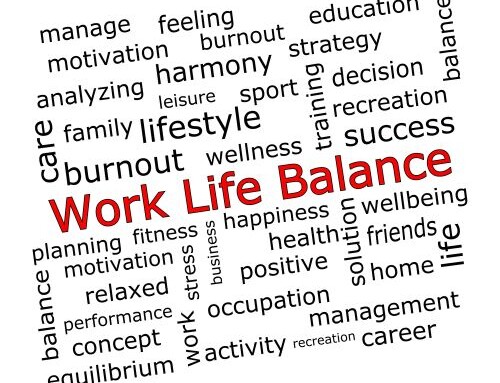A senior-level executive for a large organization needed to plan for changes that she knew would not be popular with many. Having worked on large-scale change initiatives, she was aware that mitigating change resistance would be a great place to start. She called a meeting with all department leaders. Additionally, she requested that department leaders not only attend but invite at least ten employees who would most likely embrace changes and ten who would fear or likely reject changes.
At the start of the meeting, each attendee was given a balloon (all in the same color) and a Sharpie marker. The meeting began with an opening exercise. All attendees were asked to write their first and last names on the balloon. After a few moments, the senior executive instructed attendees to toss the balloons in the air and mix them together. The attendees looked puzzled but willingly joined in the task.
Next, the senior executive gave the attendees five minutes to find the balloon with their names, but without help from others. Only a few were successful. The senior executive then instructed all attendees to help others look while allotting the same five minutes. Nearly all attendees were successful in finding the balloon with their name with assistance from others.
The senior executive then said, “The balloons represent happiness. Few people will find it if they focus only on themselves. However, if we care about each other, we’ll not only help others find joy but create it for ourselves as well.” (1)
While the quest for happiness isn’t always as simple as helping someone find a lost balloon, there are specific methods to improving happiness within the workplace. Here are six strategies to encourage workers to be delighted in their work culture:
Build an Environment that Excites Workers
The culture that employees encounter is essential to happiness. In fact, nearly 95% of executives and almost 90% of employees believe a positive corporate culture is a key to a company’s success. (2)
Employees need to thrive in their work environment. This is why managers need to understand what motivates each employee individually. Among the things that motivate employees are money, advancement opportunities, training, knowledge, and learning. Other motivating factors are social impact issues and the company’s commitment to job autonomy, life balance, as well as health, and wellness.
Training and prevention on health, safety, workplace harassment, discrimination, workplace hostility, misconduct, and substance abuse are also necessary. Other training needs that need to be covered include theft, falsifying records, and disclosing confidential information. Information and training can enhance the workplace environment, ensure a safe workplace, indicate attitudes/behaviors/actions that aren’t welcome versus those that are, and promote a motivating environment that is exciting to employees.
A workplace environment where workers are happy needs to be transparent and have an open dialogue. This dialogue needs to include difficult conversations where complex subjects are discussed. These conversations need to cover topics such as work overload, gossip or rumors, and personal issues that might require assistance. Workers also need to know they can report a problem without fear of reprisal.
Listen and Take Action
Involving employees in decision-making improves worker morale because it helps them feel valued and that they matter. When employees are involved in making changes before they are launched, they will be more receptive to their implementation. Managers must ask for and be willing to hear constructive feedback and let their workers know suggestions, ideas, and feedback are valuable and essential. It is crucial that management act on feedback when and where possible and keep employees in the loop and updated on the actions being taken.
Exude Positive Vibes
Inviting and positive cultures flow from the top-down as well as from the bottom up. When creating a positive culture, words aren’t as effective as actions! Convey happiness by smiling and laughing more and encourage the same from others. Happiness is contagious so spread the joy! Project positive energy by:
- Using positive words (e.g., I’d love to learn… I’m grateful for… I’m blessed with…),
- Giving genuine compliments,
- Being incredibly generous – give graciously, surprise quietly, be courteous,
- Being kind,
- Surrounding yourself with people who also project positive energy,
- And by letting go of negatives and replacing them with positive thoughts.
Change Perspective from Time to Time
If management perspective is always based on looking into the future, revising plans, and making decisions based on future gains, you will lose a sense of need in the moment. Managers need to take the time to explore their people and understand their work and themselves. Instead of looking ahead to future gains, consider the adjustments that need to be made in the present, the here-and-now to avoid missing critical feedback that requires action.
Before jumping to negative conclusions about the intention(s) of others, assume the best. Feelings aren’t facts. Facts can be used to solve things that feelings can’t. Facts and logic can change how you feel. But an emotion cannot change a fact no matter how strong the feeling. A negative feeling after a difficult conversation with a coworker or employee doesn’t mean that something in the relationship dynamic has changed.
Having empathy as part of your perspective will help you understand your employees. People protect themselves and don’t always project their authentic selves. This can often lead others to draw quick conclusions when they meet someone, resulting in a fast analysis of whether someone has good or bad intentions. Sometimes the assessment is accurate, but just as likely is the ability to misinterpret a gesture or expression and jump to a wrong conclusion. People have many layers that are not visible. We can’t see if the individual is dealing with inner struggles, has been through a recent trauma, or is dealing with a serious health issue. It is essential not to judge but to find empathy and help wherever possible. Showing compassion for someone does not mean people can get a free pass to hurt and damage someone else. It also does not mean that boundaries should be crossed. However, a change in perspective to one of empathy may help understand employee attitudes and actions.
Acknowledge and Reward Hardworking Employees
Recognition of achievements and hard work affects how workers feel about their workplace. Even recognition of employees’ efforts who have gone the extra mile but where things haven’t gone as planned will boost morale. Leaders and managers need to offer positive feedback. This feedback shouldn’t just come during annual reviews. Get departments to evaluate other departments and acknowledge skills, hidden talent, or individuals outside their own team or department to unite coworkers and colleagues. This acknowledgment from people outside of an employee’s limited workspace will not only enhance their work but will spread to other departments as well. Spreading goodwill across departments is never a bad thing.
Utilize peer recognition to praise those workers who may not be rewarded for the big things but are essential in the day-to-day operations. Or consider recognizing those peers who helped colleagues during a challenging period, took on extra responsibilities, or are always mentioned by customers. Be creative and acknowledge your employees.
Demonstrate that Each Employee and the Work They Do Matters
Every employee wants to know that their work has value and that they matter.
Establish a culture of respect. This culture of respect starts by taking care of your workers and letting them know they are valued and that they matter to the company. Respect can be quickly lost if management takes workers for granted, treats them as inferior, over-works them, pays all workers the same, etc. Every employee should be evaluated at the individual level based on factors such as productivity, innovation, workload, efficiency, creativity, cost awareness, time management, responsibilities, drive, feedback of stakeholders, etc.
If management asks the employees to work round the clock, are unavailable, and do not follow through on promises, employee morale will suffer, and their work will be negatively impacted. Any future-looking perspective will not be fulfilled.
Express sincere gratitude. Building a culture of appreciation starts with genuine and heartfelt actions such as a timely and a personal thank you. It also involves management which is invested in the growth of their employees both as workers and as individuals. Employees who know they are valued work harder than those who perceive they are being used.
Employees who feel happy in doing their job are engaged and are a great example to others who are less motivated. Happiness in the workplace has a direct effect on increased productivity and enhanced group performance. Be happy.
Are you seeking ideas to reward your employees to boost motivation among them? If so, contact Gavel International to learn more about travel incentive programs.
—————–
SOURCES:
- Modified from this story:
https://www.numerade.com/ask/question/a-professor-gave-a-balloon-to-every-student-who-had-to-inflate-it-write-their-name-on-it-and-throw-it-in-the-hallway-the-professor-then-mixed-all-the-balloons-the-students-were-then-given-5–96343/ - https://www2.deloitte.com/content/dam/Deloitte/global/Documents/About-Deloitte/gx-core-beliefs-and-culture.pdf
This article was last updated on September 21, 2022
- Unlocking Excellence: The 7 Traits of Top Performers and Their Impact - April 14, 2025
- Why Content Is Essential for Driving Leads – and How to Create Content That Does - March 3, 2025
- Branding vs. SEO: Striking the Perfect Balance - February 10, 2025






